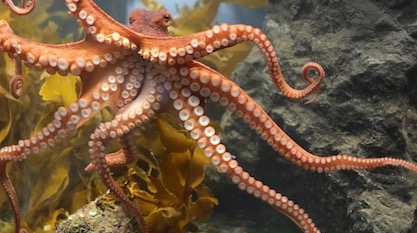 Evolution
Evolution
 Intelligent Design
Intelligent Design
Alien Octopodes and the Multiverse


Last time we referred to “Alien Octopi” in a headline here, a righteous reader came after me with a vengeance. It should be “octopuses” or “octopodes,” he reminded me, not “octopi” (which falsely implies a Latin rather than Greek derivation). You’ll notice that I have not made that mistake again.
In a new ID the Future episode host Sarah Chaffee chats with biologist Ann Gauger about a recent peer-reviewed paper proposing panspermia — life seeded on Earth from space — as a solution to the problem of explaining evolution without intelligent design. Or rather, with intelligent design by aliens. A group of 20+ researchers propose that the Cambrian explosion, bats, octopuses, human consciousness, and more may reflect deliberate intervention by an alien intelligence.
Listen to the podcast or download it here.
The panspermia thesis is not new. Francis Crick and Richard Dawkins have both flirted with it, the latter in the 2008 film Expelled. Dawkins called the idea of life’s having been “designed” by aliens an “intriguing possibility” that could even leave behind, in DNA, a scientifically recognizable “signature of some kind of designer.”
It’s ABD — “Anything But Design,” as Sarah Chaffee says — that is, anything but design that might leave open the door to a source of transcendent intelligence. Dr. Gauger makes a great point. Materialists are so committed to avoiding any inference to that kind of designer that they will go to any lengths whatsoever. Panspermia is one example, Gauger notes, and the multiverse is another. The multiverse exists in the minds of scientists only in order to evade the problem of cosmic fine-tuning, just as panspermia attracts its proponents only because, as this group of researchers admits, unguided Darwinian evolution is inadequate to explain what we see in life’s long history.
Such is the power of the challenge from ID theory. “If you increase the number of spaces that can be searched,” says Gauger, “then you make it more possible for life to have evolved. At least that’s the theory.”
Photo credit: Pseudopanax at English Wikipedia [Public domain], from Wikimedia Commons.

